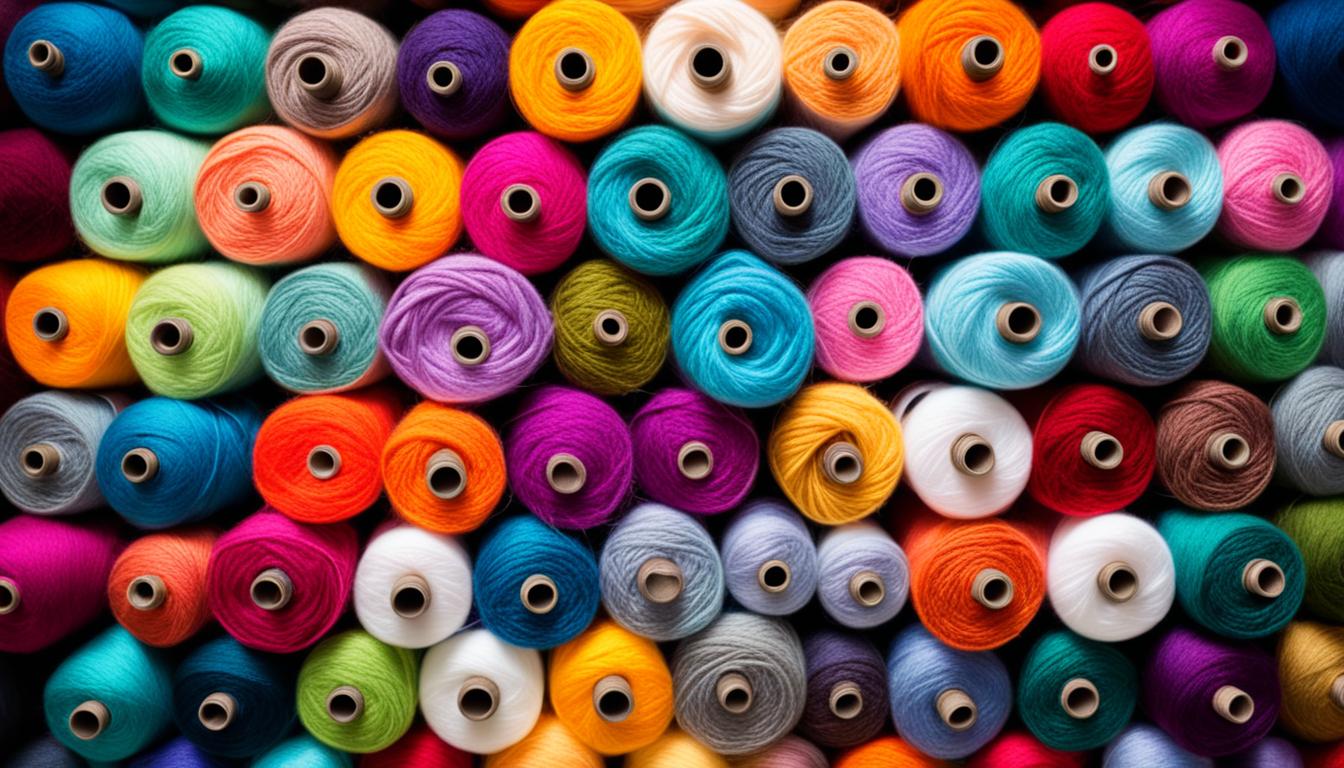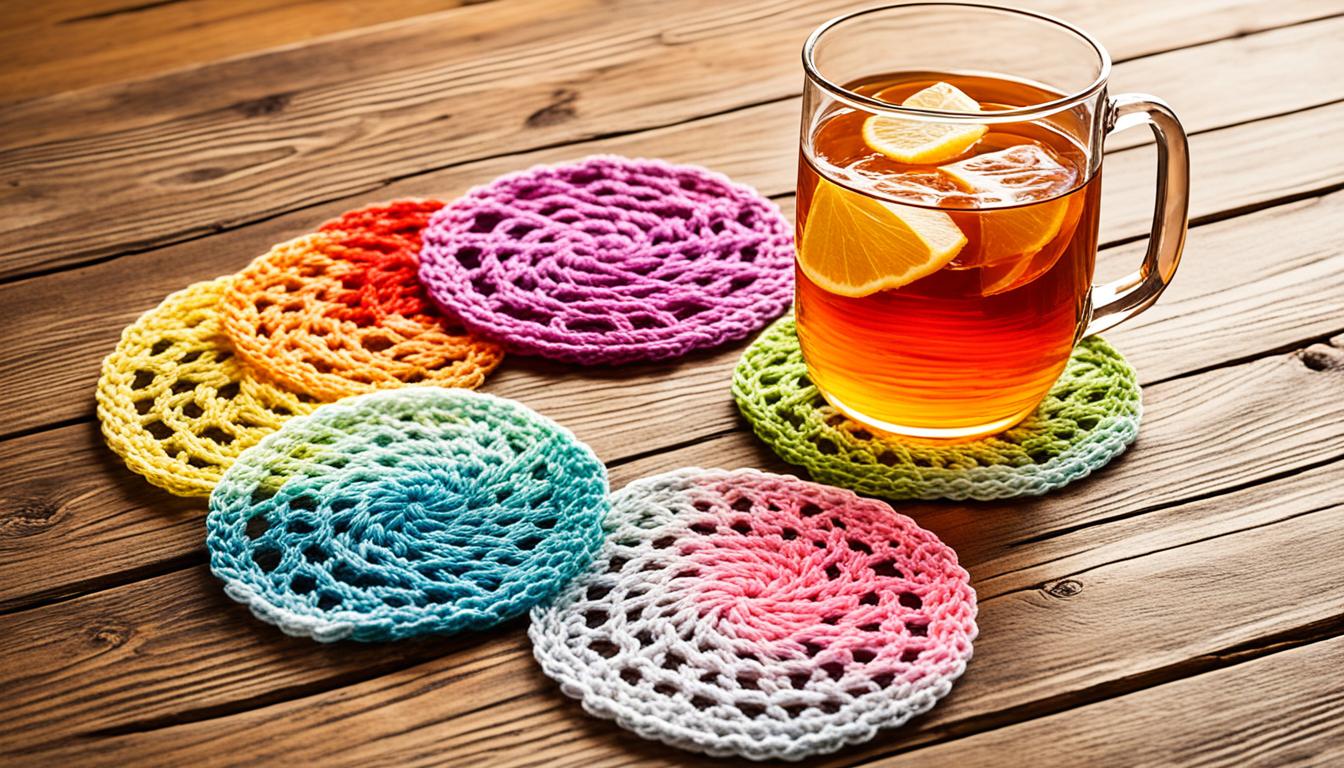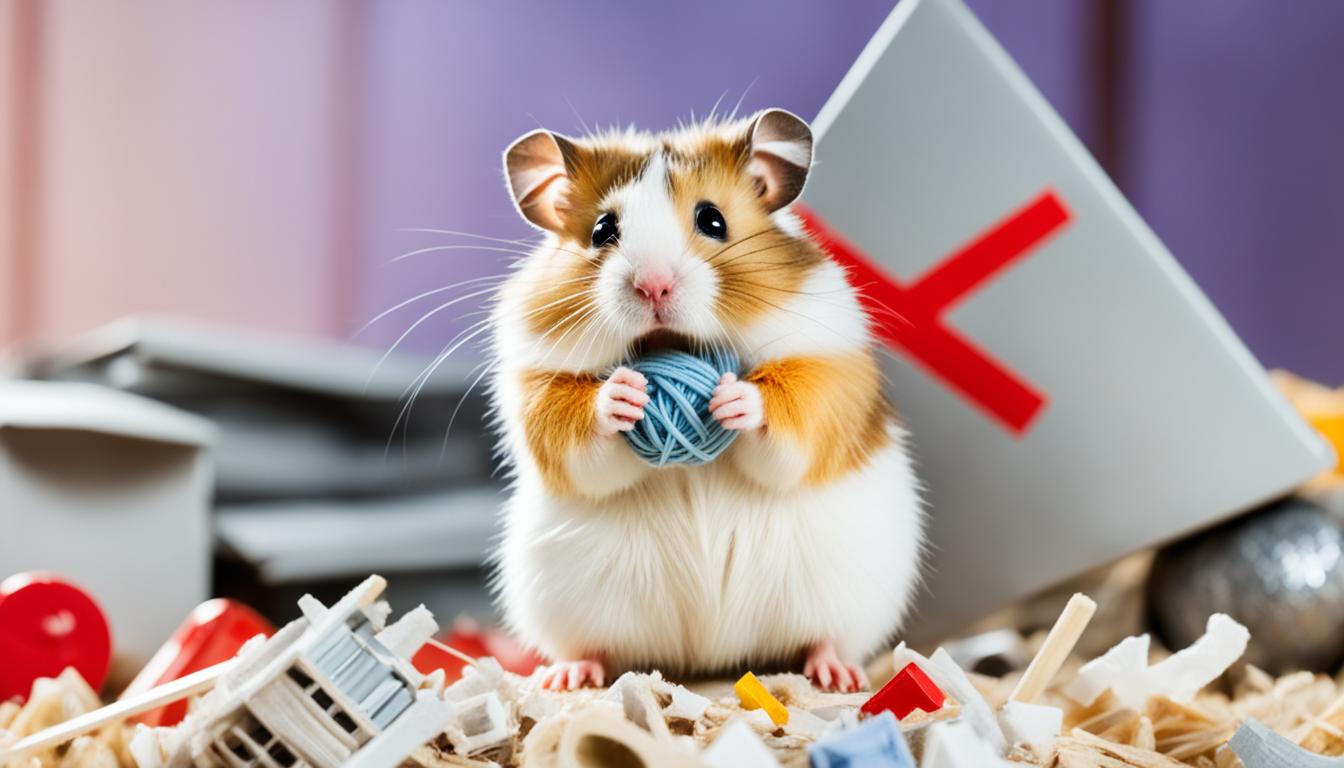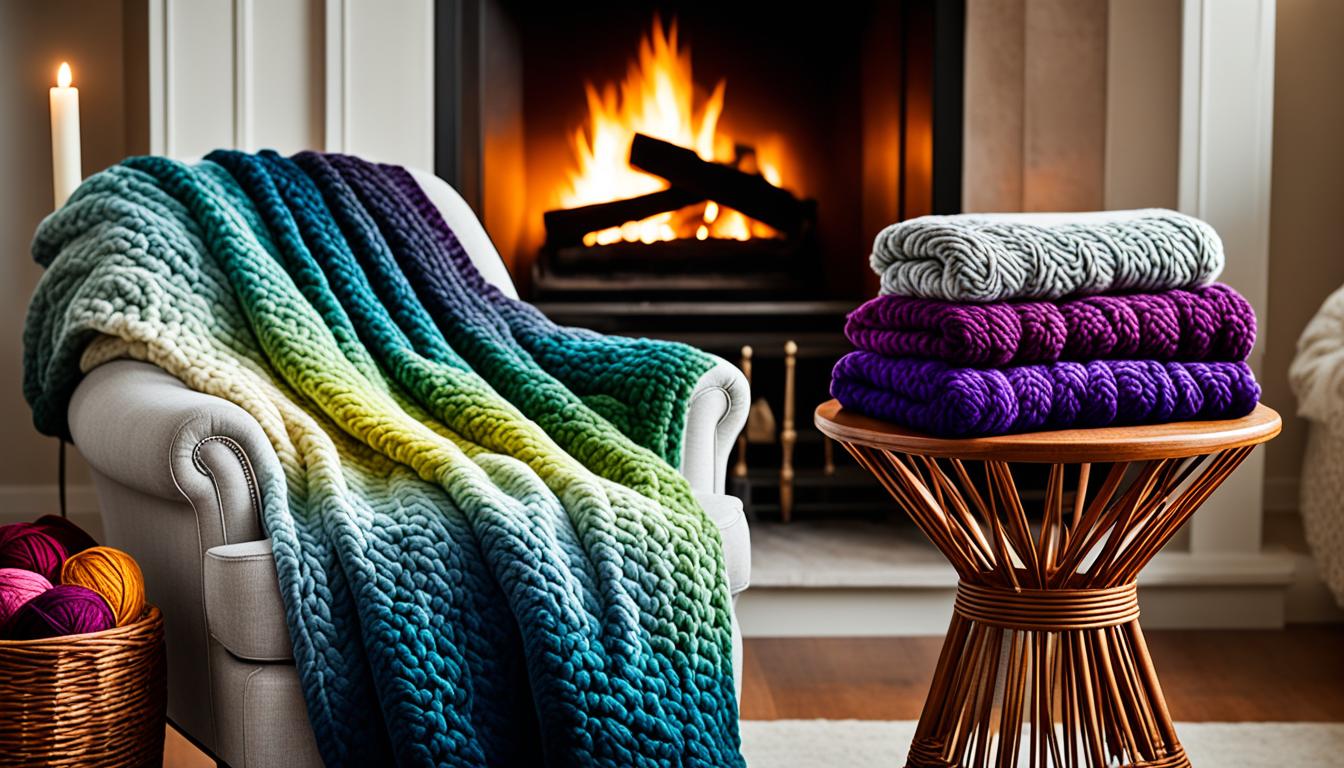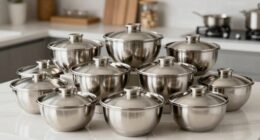Are you prepared to elevate your punch needle projects? The key is selecting the appropriate yarn. So, what yarn is ideal for punch needle? With a multitude of choices on the market, it can be daunting to select the right one. Rest assured, we are here to assist you in navigating the realm of punch needle yarn and discovering the ideal option for your projects.
Key Takeaways
- Choosing the right yarn is crucial for achieving the desired results in punch needle projects.
- The width of the punch needle tool determines the thickness of yarn to be used.
- Chunky weight yarn is suitable for wider punch needles, while finer yarn is used with narrower punch needles.
- Wool and cotton are popular choices for punch needle projects due to their durability and ease of use.
- Experimenting with different yarns is key to discovering what works best for your projects.
Punch Needle Width and Yarn Weight
When it comes to punch needle projects, the width of the punch needle tool plays a crucial role in determining the thickness of yarn to be used. Different punch needles have different widths, and it’s important to choose a yarn weight that matches the punch needle width for optimal results.
Wider punch needles, such as those with a larger punch needle width, are compatible with chunky weight yarn. Chunky weight yarn is thicker and creates more substantial loops, which make it perfect for wider punch needles. The thickness of the yarn complements the width of the punch needle, resulting in a balanced and visually appealing design.
On the other hand, narrower punch needles require finer yarn. This type of punch needle, with its smaller punch needle width, is better suited for working with delicate and intricate designs. Finer yarn creates smaller and more detailed loops, allowing for precise and intricate work.
To assist with selecting the appropriate yarn weight for your punch needle, you can refer to the Craft Yarn Council’s standard yarn weight system. This system provides guidelines for different yarn weights and their corresponding needle sizes, making it easier to match the yarn weight with the punch needle width.
“Selecting the right yarn weight for your punch needle width is essential to ensure smooth and controlled punching. It’s all about finding the perfect balance between the width of the punch needle and the thickness of the yarn.”
By carefully considering the punch needle width and choosing the corresponding yarn weight, you can achieve consistent and impressive results in your punch needle projects.
Yarn Weight Recommendations for Different Punch Needle Widths
| Punch Needle Width | Recommended Yarn Weight |
|---|---|
| Wider Punch Needle | Chunky Weight Yarn |
| Narrower Punch Needle | Finer Yarn |
When it comes to punch needle projects, the right yarn weight for the punch needle width is crucial for achieving the desired outcome. By understanding the relationship between punch needle width and yarn weight, you can create beautifully textured and visually stunning punch needle artwork.
Recommended Yarns for Punch Needle
When it comes to punch needle projects, choosing the right yarn is essential for achieving beautiful and durable results. We have narrowed down some of the best yarn options that are perfect for your punch needle creations. Whether you prefer the cozy feel of wool or the smooth texture of cotton, there is a yarn choice for every preference. So, let’s dive into our top recommendations!
1. Chunky 100% Wool Rug Yarn
If you’re looking to create sturdy and long-lasting decor items such as rugs, chunky 100% wool rug yarn is an excellent choice. Its coarse texture makes it perfect for withstanding heavy use and adding a cozy and rustic feel to your projects.
2. Aran Weight 100% Cotton Yarn
For those who prefer a non-animal product or have sensitive skin, aran weight 100% cotton yarn is a fantastic option. It offers a smooth and soft surface, making it easy to punch with and creating crisp and clean loops. This yarn is also machine washable, adding convenience to your punch needle projects.
3. (Brand Name) Acrylic Blend Yarn
If you’re looking for a more budget-friendly option without compromising quality, (Brand Name) acrylic blend yarn is a fantastic choice. It offers a wide range of vibrant colors and a soft texture that is great for punch needle projects. This yarn is versatile and can be used for various punch needle creations, from wall hangings to pillows.
4. (Brand Name) Bamboo Yarn
For eco-conscious crafters, (Brand Name) bamboo yarn is a wonderful choice. It is made from sustainable bamboo fibers and offers a silky smooth texture. This yarn glides effortlessly through the punch needle, creating even and beautiful loops. It is lightweight and breathable, perfect for creating delicate punch needle artwork.
Remember, these are just a few of our recommended yarns for punch needle projects. Don’t be afraid to experiment and try out different yarns to find what works best for you and your unique style. Happy punching!
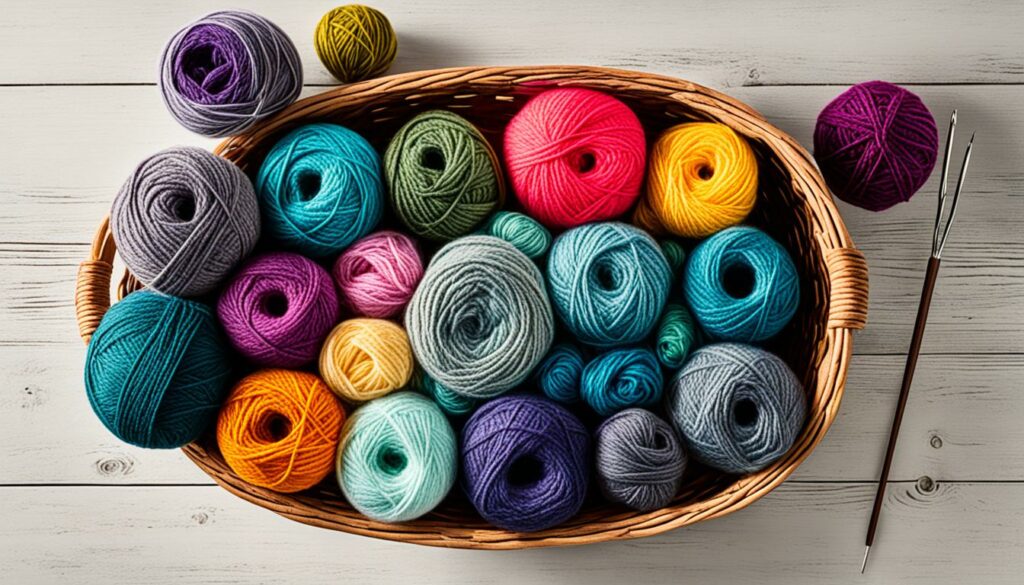
| Yarn Type | Material | Texture | Recommended For |
|---|---|---|---|
| Chunky 100% Wool Rug Yarn | 100% Wool | Coarse | Rugs, heavy-use items |
| Aran Weight 100% Cotton Yarn | 100% Cotton | Smooth | All-purpose, non-animal product |
| (Brand Name) Acrylic Blend Yarn | Acrylic blend | Soft | Vibrant projects, budget-friendly option |
| (Brand Name) Bamboo Yarn | Bamboo | Silky smooth | Delicate and lightweight creations |
Free Flowing Yarn
When it comes to punch needle projects, the movement of yarn through the punch needle tool plays a crucial role in achieving beautiful results. To ensure a smooth punching process, it is important to choose a yarn that allows for free flowing motion.
You want to avoid using yarn that is too fluffy or lumpy, as it can cause snags and get stuck in the tool. A smoother yarn, especially for beginners, is the ideal choice to prevent any issues during the punching process. However, it’s important to find the right balance between smoothness and grip.
On the other hand, using yarn that is too silky can have its own challenges. It may slide too easily through the needle without creating even loops, resulting in a less controlled outcome.
So, how do you find the perfect yarn with the right flow? It’s important to consider the texture and feel of the yarn. Opt for a yarn that is smooth and consistent, providing enough grip to form the loops while allowing for a seamless movement through the punch needle.
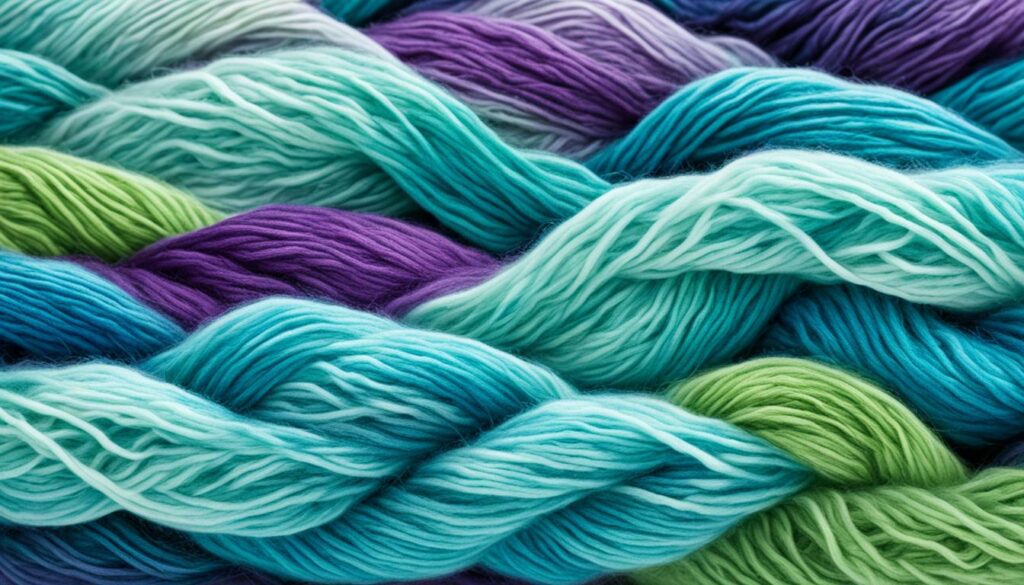
Experimenting with different yarns and brands will help you find the one that works best for your projects. As you gain more experience, you will develop a preference for specific yarns based on their flow and performance. Remember, finding the right yarn is key to achieving consistent and beautiful results in your punch needle creations.
Knots in Yarn
Occasionally, we may come across knots in the yarn we use for punch needle projects. These knots can pose a challenge when working with a punch needle, affecting the overall quality of our needlework. To ensure smooth and seamless punching, it is important to deal with these knots appropriately.
Dealing with Knots in Yarn:
Inspect the yarn before starting your project. Look for any knots or tangles that may be present. By identifying and addressing them early on, you can avoid potential issues while working on your punch needle project.
If you come across a knot, gently untangle it using your fingers. Take care not to pull or tug too harshly, as this may cause the yarn to break or create uneven loops.
In some cases, it may be necessary to cut and remove the knot entirely if it cannot be untangled. This ensures that the yarn continues to flow smoothly through the punch needle without any disruptions.
Remember to rejoin the yarn securely after removing a knot to maintain the integrity of your stitches. You can do this by tying a small knot or weaving in the loose ends of the yarn.
Benefits of Knot-Free Yarn:
Using knot-free yarn in your punch needle projects helps to ensure consistent results and a professional finish. By eliminating knots, you minimize the risk of uneven loops, loops coming undone, or the punch needle tool getting trapped. This allows you to focus on creating beautiful and intricate designs with confidence.
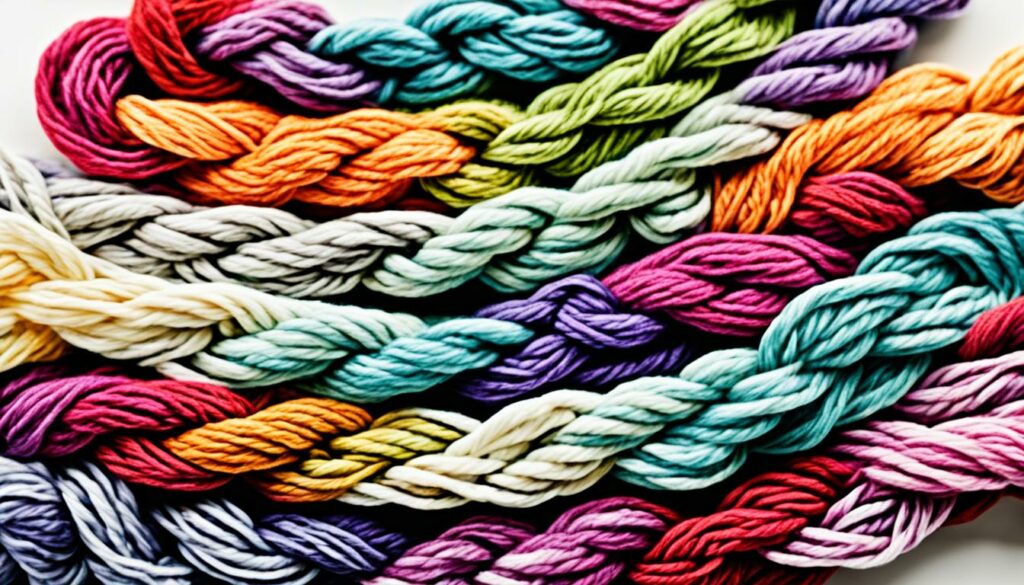
Punch Needle Tools – Choosing the Right One
When it comes to punch needle projects, selecting the right tools is just as important as choosing the perfect yarn. With a wide variety of punch needle tools available on the market, it can be overwhelming to decide which one is best for you. We’re here to help you navigate the world of punch needle tools and find the perfect fit for your creative endeavors.
Types of Punch Needles
Before diving into the selection process, let’s explore some of the different types of punch needles:
- Regular punch needles: These versatile tools are designed for medium to thick yarns. They are a great choice for creating bold and textured designs.
- Fine punch needles: If you prefer working with thinner yarns or embroidery floss, the fine punch needle is your go-to option. It allows for intricate details and delicate designs.
- Adjustable punch needles: These innovative tools offer flexibility in loop length, making it easy to create different textures and pile heights in your work. They are perfect for achieving depth and dimension.
When choosing a punch needle tool, consider several factors:
- Needle size: Determine the size of the needle that best suits your project. Larger needles are ideal for creating bold designs, while smaller needles allow for finer details.
- Adjustability: If you want to experiment with different textures and pile heights, an adjustable punch needle is a must-have. It gives you the freedom to customize your work.
- Ergonomics: Comfort is key when working on your punch needle projects. Look for tools with ergonomic handles that provide a comfortable grip and minimize hand fatigue.
- Brand reputation: Trusted brands often offer high-quality punch needle tools. Research and read reviews to ensure you’re investing in a reliable tool.
Remember, the right punch needle tool can make a world of difference in your punch needle journey. Consider your specific needs, project requirements, and personal preferences before making a decision.
“Choosing the perfect punch needle tool is like finding a paintbrush that complements your artistic style. It sets the foundation for your creative expression.”
Punch Needle Tool Comparison
| Punch Needle Tool | Size | Adjustability | Ergonomics |
|---|---|---|---|
| Regular Punch Needle | Various sizes available | Not adjustable | Ergonomic handles |
| Fine Punch Needle | Various sizes available | Not adjustable | Ergonomic handles |
| Adjustable Punch Needle | Various sizes available | Adjustable loop length | Ergonomic handles |
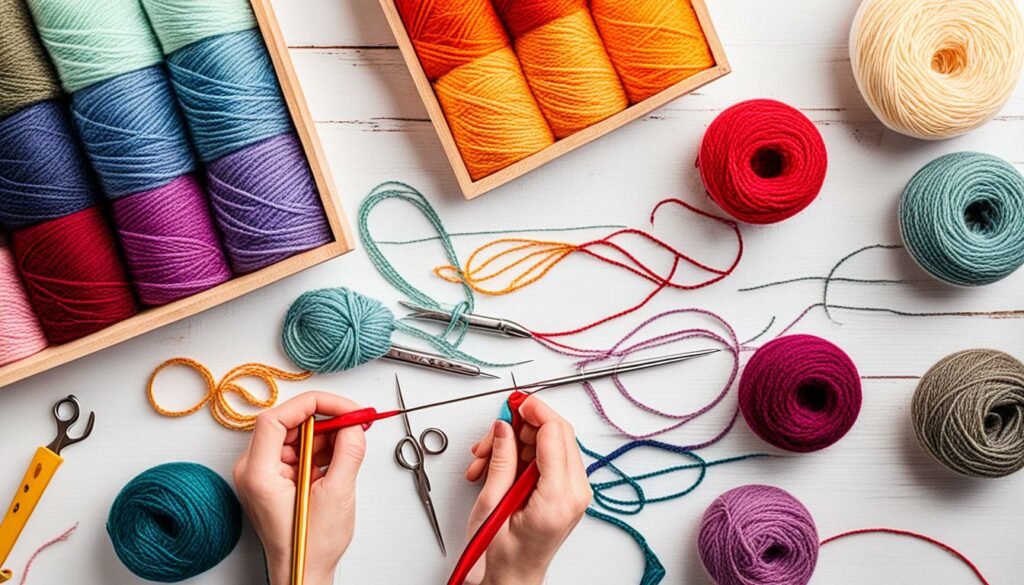
Foundation Fabric for Punch Needle
When it comes to punch needle embroidery, choosing the right foundation fabric is key to creating beautiful and durable projects. The foundation fabric, also known as the backing fabric, provides the base for your punch needle stitches. Two popular options for punch needle fabric are Monk’s cloth and Weaver’s cloth.
Monk’s cloth
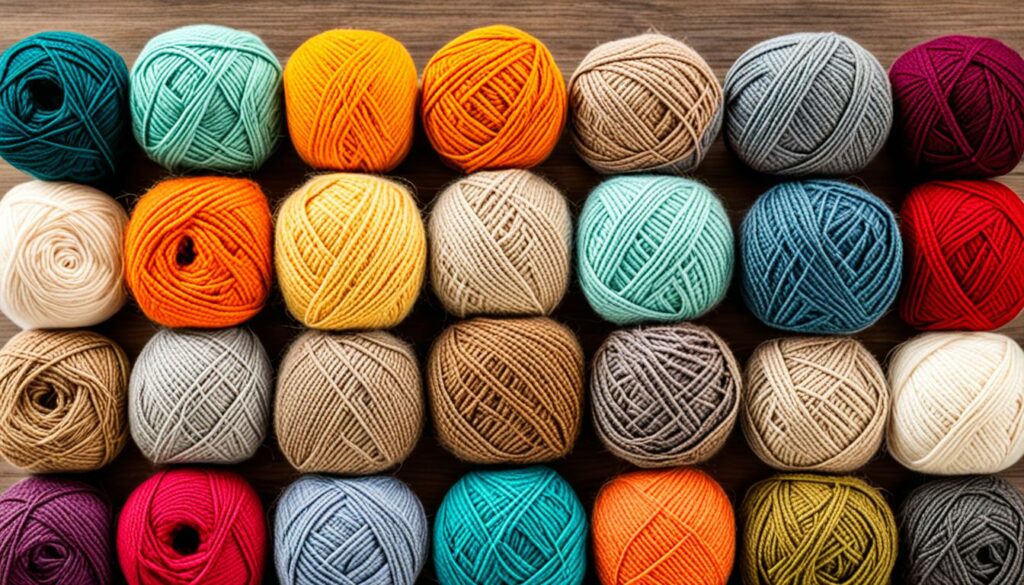
Monk’s cloth is a versatile fabric that is widely used in punch needle embroidery. It is made of 100% cotton and is known for its sturdiness and flexibility. Monk’s cloth comes in different counts, with 12-count being the most common choice for punch needle projects. The higher the count, the smaller the holes in the fabric, allowing for finer details in your embroidery.
Monk’s cloth is well-suited for a variety of punch needle designs, from rugs to wall hangings and more. Its tight weave provides a stable surface for punching, ensuring that your stitches are secure and won’t easily come undone. Additionally, Monk’s cloth has a slight stretch to it, which helps to accommodate the movement of the punch needle tool.
Weaver’s cloth
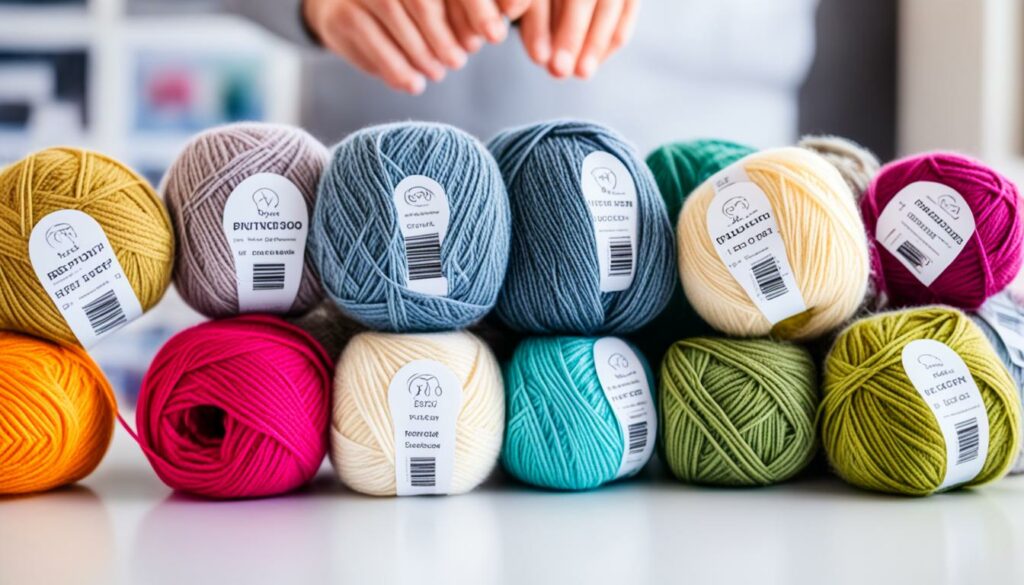
Weaver’s cloth is another type of fabric that can be used for punch needle embroidery, particularly when working with finer yarns or embroidery floss. It is a lightweight and tightly woven fabric that allows for more intricate and delicate designs. Weaver’s cloth is often used for creating small punch needle pieces such as jewelry, patches, or intricate motifs.
When selecting fabric for your punch needle projects, it’s important to consider factors such as the fabric count, texture, and durability. The fabric count will determine the size of the holes and the level of detail you can achieve. The texture should be smooth enough to allow the punch needle tool to move through the fabric easily, but not too slippery that it affects the tightness of your stitches. Lastly, choosing a durable fabric will ensure that your punch needle projects will last for years to come.
Remember, the foundation fabric sets the stage for your punch needle embroidery, so take the time to select the right fabric for your project. Whether you choose Monk’s cloth or Weaver’s cloth, make sure it matches your punch needle design and personal preferences.
Now that you have a better understanding of foundation fabrics for punch needle, let’s move on to the next section and discuss frames and hoops that are essential for holding the fabric taut during the punching process.
Frames and Hoops for Punch Needle
A frame or hoop is an essential tool for punch needle projects as it holds the fabric taut while you punch with the needle. There are different options available, each with its own features and benefits to consider. Let’s explore some popular choices for punch needle frames and hoops:
Gripper Strip Frames
Gripper strip frames are ideal for larger punch needle projects. They have a gripping mechanism that securely holds the fabric in place, preventing it from slipping or moving during punching. This type of frame is great for maintaining tension and achieving consistent results. With a gripper strip frame, you can focus on your stitching without worrying about the fabric shifting.
No-Slip Embroidery Hoops
No-slip embroidery hoops are another option for securing your punch needle fabric. These hoops feature a special design that prevents the fabric from slipping out of place. They are easy to use and provide a firm grip, ensuring that your fabric remains taut throughout the stitching process. No-slip embroidery hoops are especially popular among beginners due to their simplicity and effectiveness.
| Frame Type | Key Features |
|---|---|
| Gripper Strip Frames | Secure grip for larger projects |
| No-Slip Embroidery Hoops | Easy to use, prevents slipping |
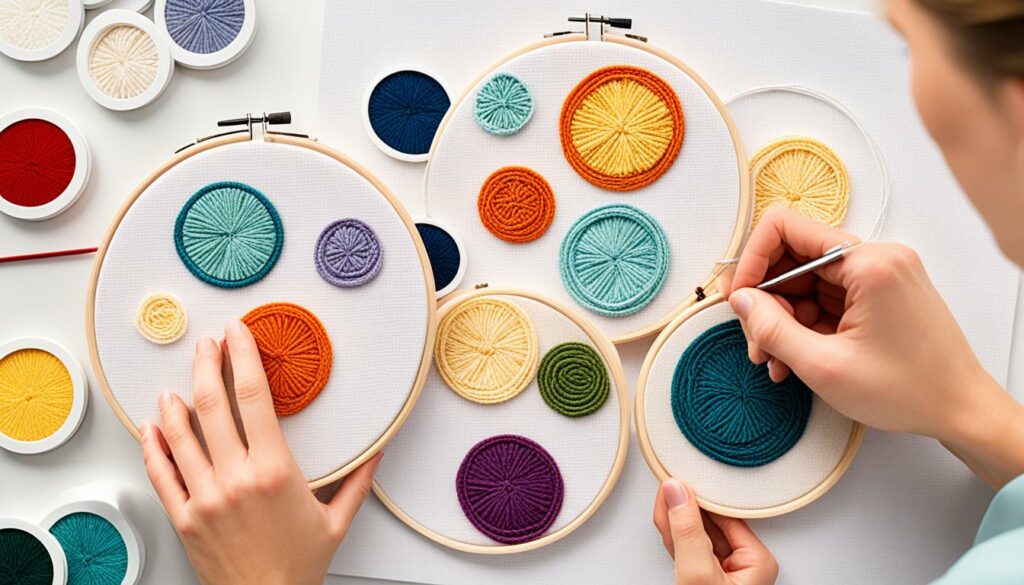
Q-Snap PVC Frames
Q-Snap frames are made of PVC and are known for their versatility and convenience. They consist of snap-together sections that easily hold the fabric taut. Q-Snap frames are lightweight and portable, making them a popular choice among punch needle enthusiasts who like to take their projects on the go. These frames are also easy to assemble and disassemble, allowing for quick fabric changes.
Carpet Tack Frames
Carpet tack frames provide a sturdy and durable option for punch needle projects. They are made of a wooden frame with a layer of carpet tacks on each side. The tacks securely hold the fabric in place, ensuring that it remains taut while you work. Carpet tack frames are commonly used by experienced punch needle artists who require maximum stability and tension for their intricate designs.
When choosing a frame or hoop for your punch needle projects, consider your personal preferences, the size of your project, and the level of tension you desire. It’s also helpful to experiment with different frames to find the one that works best for you. With the right frame or hoop, you’ll have a sturdy foundation that allows you to create beautiful punch needle art.
Conclusion
In conclusion, selecting the right yarn for your punch needle projects is crucial in achieving the desired results. Consider the width of your punch needle tool, the weight of the yarn, and the type of fabric you are using. By taking these factors into account, you can make an informed choice when selecting your yarn.
Recommended yarns for punch needle include chunky 100% wool rug yarn and aran weight 100% cotton yarn. Both options offer durability and ease of use, making them excellent choices for your projects.
When working with the punch needle, it is important to choose a yarn that moves smoothly through the tool and does not have knots. This will ensure that the punching process is seamless and that you achieve consistent results.
With the right yarn and tools, along with practice and experimentation, you can create beautiful punch needle artwork. So go ahead, explore different yarn options, and let your creativity flow!
